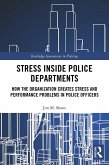Drawing from established threat assessment, behavioral analysis, and law enforcement negotiation theory and practice, the book presents models and methods designed to forecast and prevent an active killer attack through the process of identification, assessment, and engagement. This approach begins with definitions and orientations to violence, the importance of the primacy of focusing on direct behaviors of planned lethal violence over other more indirect behaviors, understanding how to identify a fatal grievance and that only fatal grievances result in planned lethal violence, the importance of understanding the process of crisis intervention as the key to eliminating the fatal grievance and the motivation to kill, and the use of time-series predictive behavioral threat forecasting methods to prevent an active killer attack. Case studies from within the United States (US) and abroad support this unique approach to threat assessment and make the concepts and principles accessible to professionals working in the fields of education, human resources, and security.
Dieser Download kann aus rechtlichen Gründen nur mit Rechnungsadresse in A, B, BG, CY, CZ, D, DK, EW, E, FIN, F, GR, HR, H, IRL, I, LT, L, LR, M, NL, PL, P, R, S, SLO, SK ausgeliefert werden.
Katherine Schweit, Author of Stop the Killing. Creator of the FBI's Active Shooter Program
"This book expertly incorporates the theory and practice of crisis and hostage negotiation in effectively engaging potential active killer threats. It is a refreshing 'Who Cares Wins' approach to preventing violence."
Dr Gilbert Wong, Life Honorary Consultant of the Hong Kong Police Negotiation Cadre (PNC). Commanding Officer of the PNC (2010 - 2021). Former Chief Superintendent of Police
"A highly thoughtful and originally conceived study, this volume offers a unique, and systematic, way of evaluating so-called active killers, which challenges many orthodox assumptions that have governed previous approaches to the threat. The ultimate value of this book is that it presents new ways of thinking, and a new hope, for dealing with the scourge".
M.L.R. Smith, Chair of Strategic Theory, Department of War Studies, King's College, University of London. Co-author of Sacred Violence: Political Religion in a Secular Age









